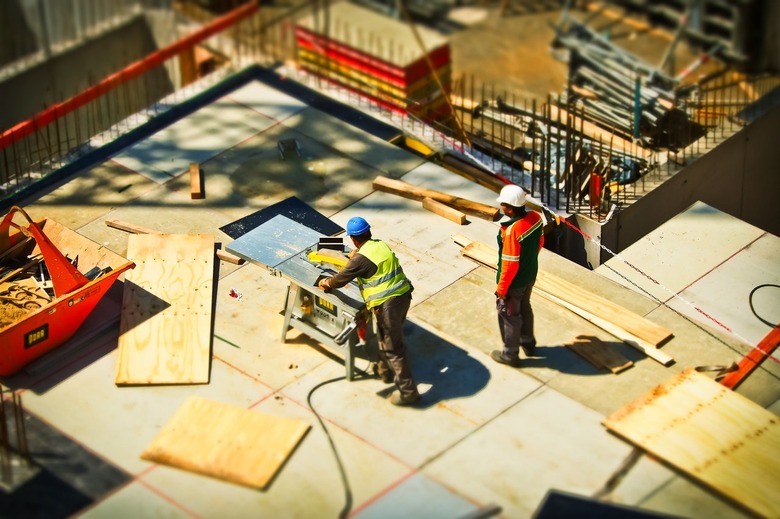What Types Of Plywood Can Be Used Outdoors?
Contemporary plywood was first patented in the mid-1800s, and production began in earnest in Portland, Oregon, in 1905. Exterior plywood came on the scene in 1934 with the development of a waterproof adhesive. Today, builders can choose from several types of exterior plywood. The best choice depends primarily on the intended use, but budget can also be a consideration. CDX plywood, a stock item at most lumberyards, is a utility grade suitable for most outdoor projects.
The Difference Between Exterior and Interior Plywood
The Difference Between Exterior and Interior Plywood
Because it's used for cabinetry and interior finishing, the appearance of interior plywood is more important than its resistance to moisture and rot. Exterior plywood is seldom pretty. It often has visible knots and blemishes, and most of it is made from readily available Douglas fir or southern pine — not expensive hardwood. However, it's far more durable. Its layers are glued together with waterproof adhesive that prevents them from delaminating in wet weather.
If you use interior plywood outdoors, it won't be long before the corners of the sheets separate, and eventually the plywood will become spongy and disintegrate. You can delay this process — perhaps for many years — by painting both sides and all the edges with high-quality exterior enamel. You can also paint exterior plywood, but you don't have to. It will last even if you leave it unfinished.
Types of Exterior Plywood
Types of Exterior Plywood
CDX is the most common exterior plywood grade. It comes in 3/4-, 5/8- and 1/2-inch thicknesses. Appearance stamps on plywood range from cabinet-grade (A) to construction grade (C and D). Exterior plywood carries an X stamp, which identifies it as suitable for use outdoors. Beside CDX, you can also find better grades, such as ABX, ACX and even BCX.
Marine grade plywood is similar to standard exterior-grade plywood, but its core consists of knot-free sheets, eliminating the possibility of the formation of water pockets within the structure.
Pressure-treated plywood usually has a greenish hue and a slightly oily surface. Manufacturers produce it by infusing regular plywood with chemicals under pressure to give it added resistance to mold and mildew. Treatment chemicals include chromated copper arsenate (CCA), ammoniacal copper quat (ACQ), copper azole (CA) and — safest of all — borates.
Oriented strand board (OSB) is an engineered plywood substitute that many builders use for sheathing and roof decking. It's constructed with waterproof glue and performs best when only semi-exposed to the elements, as it is when covered with siding or roofing. It's less expensive than plywood and available virtually everywhere.
T1-11 is an exterior-grade plywood designed for use as siding. It features a rough-sawn appearance that may or may not be grooved to simulate the appearance of vertical slats. Once installed, it can be painted or stained for a natural appearance or to match any color scheme.
Which Type Should I Use?
Which Type Should I Use?
You can use X-grade plywood for most outdoor applications, and when budget is a constraint, use CDX. When coated with a urethane finish, it will survive all but the harshest conditions. However, certain applications call for specific plywood choices:
Ground contact and horizontal installations — Pressure-treated plywood is rated for ground contact, and it will last longest in a poor drainage situation, such as the surface of a deck or walkway.
Total immersion — When building a cistern or other outdoor vessel to hold water, use marine-grade plywood. This type of plywood is too expensive for most other uses, but is the only choice when the application calls for it to be underwater. Its name indicates it's the obvious choice for building boats and underwater structures.
Decorative structures — T1-11 is the best choice for siding, and it's also the best material for building sheds and outdoor storage boxes.
